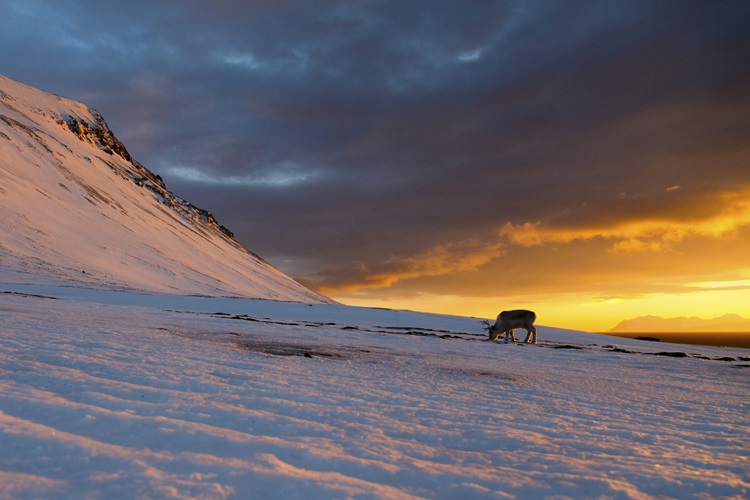Santa’s reindeer and the quest for Scottish enlichenment

Researchers at the University of St Andrews and Dartmouth College in the US have revealed that, while Rudolph’s red nose may help guide Santa’s sleigh through a foggy night, it’s a reindeer’s excellent night vision that allows them to locate dinner after a long Christmas season.
A new study, Reindeer and the quest for Scottish enlichenment, led by Professor Nathaniel Dominy, Charles Hansen Professor of Anthropology at Dartmouth College, and Dr Catherine Hobaiter and Professor Julie Harris, both of St Andrews School of Psychology and Neuroscience, has shown that reindeer have special night vision enabling them to find food like lichen.
Commenting on the findings, Professor Dominy said: “Reindeer are so cool, but many people think about them only at Christmas. Now is a good time to alert people to their extraordinary visual system.”
The study, published in i-Perception, looked at why the surface of reindeer eyes (the tapetum) changes colour from golden-orange in the summer to rich-blue in the winter. Reindeer are the only daytime mammals to do this. While this shift to blue likely helps them to see in the permanent twilight of high-northern winters, it also allows their eyes to transmit ultraviolet light. That deepens the mystery – because when you live in snowy conditions, it is especially risky to have UV-sensitive eyes due to the fact sunlight reflects off snow resulting in a double dose of UV light.
A second piece of the puzzle lies in another unusual feature of reindeer biology – the fact that they feed primarily on a species of lichen – reindeer moss (Cladonia rangiferina). This is not actually moss at all; it grows in deep pale spongy beds right across the northern latitudes that reindeer live in and is crucial for their winter survival.
Dr Hobaiter explained that, a few years ago, it was suggested that reindeer’s specialist vision might be an adaptation to help them detect lichen, but initial testing did not find much evidence. However, lichen species are incredibly diverse – there are more than 13,000 species worldwide and no one has yet tested the species that the reindeer feed on.
She said: “One of the amazing things about Scotland is that we have some of the richest lichen diversity in the world: the Highlands host over 1500 different species, and the Cairngorms are home to a local herd of reindeer, reintroduced to Scotland after being hunted to extinction. So, Scotland is the perfect place to try and finally solve the mystery.”
Dr Hobaiter said the research team engaged in a little early March heather-bashing in search of Cairngorm lichen beds, with the aims of photographing them under UV light. They were able to show that different species of lichen absorb or reflect UV light differently – and crucially that the species reindeer feed on are strong absorbers.
She explained: “To our eyes, just like for most mammals, pale lichen in white snow is incredibly hard to spot! But to reindeer eyes, the species they need to feed on would stand out as dark patches in the much more reflective snowy landscape.”
Professor Dominy added: “If you can put yourself in their hooves looking at this white landscape, you would want a direct route to your food. Reindeer don’t want to waste energy wandering around searching for food in a cold, barren environment. If they can see lichens from a distance, that gives them a big advantage, letting them conserve precious calories at a time when food is scarce.”
Category Sustainability